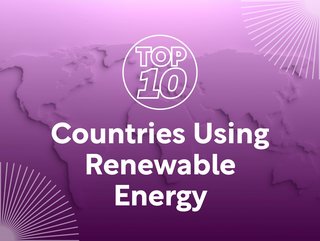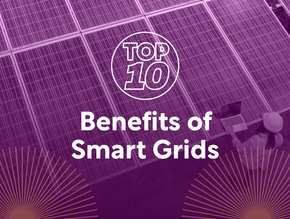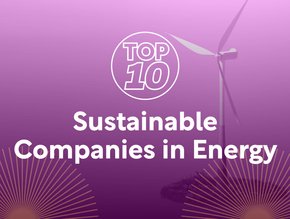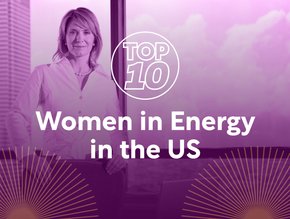Top 10: Countries Using Renewable Energy

As the global energy transition continues to develop, which countries are generating the highest percentage of the renewable energy necessary for sustainability progress?
The countries at the top of our list can somewhat attribute their high percentages in renewable energy generation to their abundant natural resources including Iceland’s geothermal energy potential, Norway’s vast hydroelectric power capacity, and Denmark’s wind power generation.
Many governments are acknowledging the benefits of increased sustainable energy production, supporting advancements in technology, increasing public awareness and introducing policies in support of reducing carbon emissions through energy production.
As countries continue to invest in renewable infrastructure and explore innovative solutions, the proportion of electricity generated from renewable sources is expected to increase further in the coming years.
10. Colombia
Renewable energy generation: 33.02%
Alongside being a leader in electric public transport, Columbia is also one of the biggest hydroelectricity users in the world. Enel is the largest power generation company in Colombia, providing sustainable energy — including approximately 300 solar panels capable of generating enough energy to cover the monthly demand of approximately 753 households.
9. Finland
Renewable energy generation: 34.61%
Nuclear, hydro and bioenergy are the key pillars of Finland’s sustainable energy strategy as the country works towards net zero by 2035 target. It is a leading country in public and private spending on energy research, development and demonstration, as well as being a global leader in second-generation biofuels produced from wood, notably biodiesel.
Fortum is the Nordics' largest electricity retail business, providing over two million customers with electricity produced without CO2 emissions.
8. Switzerland
Renewable energy generation: 36.72%
Nuclear and hydro are Switzerland’s primary renewable energy sources, however the country is in a period of energy transition itself, as residents voted to phase out nuclear energy in 2017. Axpo is Switzerland's largest producer of renewable energy and an international leader in energy trading and the marketing of solar and wind power.
7. Austria
Renewable energy generation: 37.48%
Hydropower is the driving force behind sustainable energy production in Austria. The European country aims to use 100% electricity supplied by renewable sources — primarily hydro, wind and solar — by 2030.
OMV Group is the largest energy company in Austria, and has been providing energy solutions to the country for over 60 years.
6. Denmark
Renewable energy generation: 39.25%
Denmark is on a mission to cut greenhouse gas (GHG) emissions by 70% from 1990 levels by 2030 and for renewables to cover at least half of the country’s total energy consumption by 2030.
The country is already the world-leader in wind power, and is also cutting out coal-fired power. The largest energy company in Denmark is Ørsted A/S, previously known as Dong Energy.
5. New Zealand
Renewable energy generation: 40.22%
New Zealand is a success story for the development of renewable energy, including hydropower and geothermal energy, without government subsidies. The country, which is currently phasing out offshore oil and gas production, is currently pledging under the Paris Agreement to cut emissions by 30% below 2005 levels by 2030. One of the companies working towards this goal — and one of New Zealand’s largest energy providers — is Genesis.
4. Brazil
Renewable energy generation: 46.22%
Brazil generates and distributes electricity to over 85 million residential, commercial, and industrial consumers — more than the power produced by all other South American countries combined — around 60% of which is distributed by Centrais Elétricas Brasileiras (Eletrobrás). By 2029, investment into the Brazilian electricity sector is expected to reach US$94bn.
Alongside flourishing solar and wind industries, Brazil has a promising civil nuclear energy market, with analysts projecting investments of approximately US$50bn in Brazil’s nuclear energy sector over the next 30 years. Currently, two nuclear reactors, Angra 1 and 2, account for over 1,900 megawatts (MW) of installed capacity, representing 2% of Brazil’s power generation, with Angra 3 in production.
3. Sweden
Renewable energy generation: 50.92%
As a global leader in decarbonisation, Sweden was the first country to introduce carbon pricing and has the highest carbon price in the world. The European country has targets to cut greenhouse gas emissions 59% by 2030 compared with 2005, and to have a net-zero carbon economy by 2045.
The most used renewable sources in Sweden are hydropower — mostly used for electricity production — and bioenergy — mostly for heating. The Swedes are impressively ahead of their sustainable energy targets too — in 2012 the country reached the government’s 2020 target of 50% renewable energy. For the power sector, the target is 100% renewable electricity production by 2040.
“Sweden has shown that ambitious energy transition policies can accompany strong economic growth” said Paul Simons, during his tenure as the International Energy Agency’s Deputy Executive Director. He is currently a Senior Consultant at the IEA for country policy analysis and peer reviewer for key IEA publications alongside his role at the prestigious Yale University as a Senior Fellow.
“The time has come to implement a clear roadmap towards the long term target of carbon neutrality.”
2. Norway
Renewable energy generation: 71.56%
Hydroelectricity is one of the main power sources in Norway, the Scandinavian country that is also one of the biggest energy exporters in the world. Much of this is managed by Statkraft, Norway's largest power generator and Europe’s largest producer of renewable energy.
Whilst it has already achieved mass uptake of renewable electricity, Norway has ambitious targets to reduce greenhouse gas emissions. It plans to achieve 90-95% reductions (excluding sinks) from 1990 levels by 2050, which the IEA believes is possible, but will require extensive dedication, particularly in transport and industry.
1. Iceland
Renewable energy generation: 86.87%
Iceland is a country famous for its incredible landscape, including volcanoes, geysers, hot springs and lava fields. As well as being beautiful, iconic tourist attractions and home to some incredible, unique wildlife, these geographical advantages allow the country to generate the majority of its fuel from renewable geothermal sources.
Iceland utilises its positioning on the Mid-Atlantic Ridge — a tectonic plate boundary that provides abundant geothermal energy resources — by tapping into volcanic heat through geothermal power plants to harness sustainable geothermal energy.
The country also generates hydroelectric and wind power to further diversify its renewable energy portfolio.
The largest energy company in Iceland is Landsvirkjun, the National Power Company of Iceland which operates 15 hydropower stations, three geothermal power stations and two wind turbines.
********************************************
For more energy insights check out the latest edition of Energy Digital Magazine and be sure to follow us on LinkedIn & Twitter.
You may also be interested in Sustainability Magazine and EV Magazine.
*********************************************
Net Zero LIVE will be hosted live from the QEII Centre, London on the 6th and 7th of March, and streamed globally via our virtual event platform Brella. Net Zero LIVE London will feature four LIVE themes, incorporating Sustainability LIVE, EV LIVE, Scope 3 LIVE, and Energy LIVE to deliver a holistic conference and exhibition experience with opportunities to connect with like-minded peers and actively contribute to crafting a sustainable future. Following Net Zero LIVE, viewers can also sign up for Sustainability LIVE Dubai and Singapore.
Sign up to the The Global Sustainability & ESG Awards 2024, coming to London on the 11th September 2024.
*********************************************
BizClik is a global provider of B2B digital media platforms that cover Executive Communities for CEOs, CFOs, CMOs, Sustainability Leaders, Procurement & Supply Chain Leaders, Technology & AI Leaders, Cyber Leaders, FinTech & InsurTech Leaders as well as covering industries such as Manufacturing, Mining, Energy, EV, Construction, Healthcare + Food & Drink.
BizClik – based in London, Dubai, and New York – offers services such as Content Creation, Advertising & Sponsorship Solutions, Webinars & Events.






